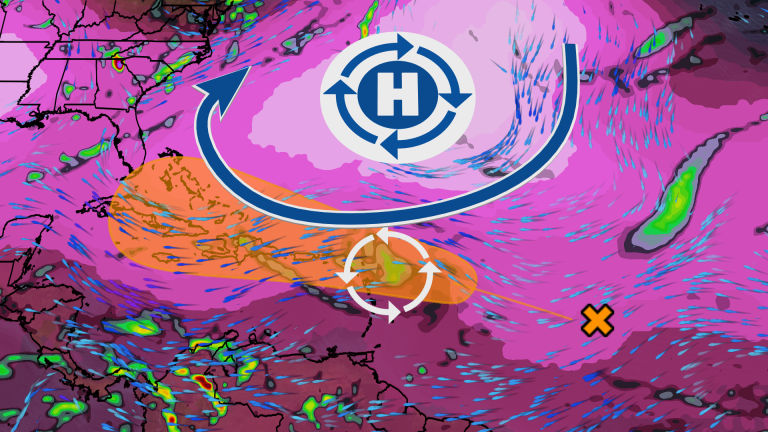

- Tropical development is possible near the Caribbean next week.
- At this time, it is unclear whether the system will track the Antilles or near the southeastern coast.
- The formation of tropical systems is common in the Caribbean or off the U.S. East Coast in August.
After a tropical slumber, the Atlantic Ocean is showing signs of life as August approaches.
Saharan dust has been accumulating in the Atlantic since Beryl's demise about three weeks ago, but computer guidance now suggests we may get a tropical system in the last days of July or early August.
Spin and moisture are expected to accumulate in the Mid-Atlantic over the next few days as tropical waves move through major development areas. Development is expected to be slow as Saharan and dry air lingers in the region, but conditions closer to the Antilles may be more favorable.
The National Hurricane Center currently says there is a moderate chance of development over the next seven days.


Model guidance is far from agreement on how the system will form into a tropical depression or storm.
Currently, models don't agree on where the system will go after it passes Puerto Rico, or even if it will eventually form.
Prior to this system, conditions were generally favorable for development.
Water temperatures are in the mid to upper 80s, slightly above average for late July. The moisture pockets brought by tropical waves should be large enough and sufficient to prevent the system from drying out. Wind shear should also be light to moderate until it reaches the longitude of the Bahamas.
This activity occurs at the beginning of the most active period of the year in the tropics and a wave of more favorable atmospheric conditions, a favorable phase of the Madden-Julian Oscillation. The wave orbits the Earth approximately once every 40 days and gives a boost to the tropics as it passes through them. Recently, Category 4 typhoons and tropical storms formed in the western Pacific after experiencing a cyclonic drought similar to that seen in the Atlantic.
System is a Caribbean threat, but future unknown: The tropical disturbance will be directed west-northwestward by the Bermuda High.
Given the possible routes around the Greater Antilles (Puerto Rico, Hispaniola and/or Cuba), topography must be factored into the forecast. An orbit around any of these islands could disrupt and weaken the system.
Regardless of the formation, heavy rain is possible over the Antilles next week.
Beyond that, the strength, direction, and extent of this high-pressure dome will determine the system's ultimate trajectory toward the United States.
A stronger Bermuda high school would push this system, in whatever form it takes, into Cuba, Florida, or the Gulf of Mexico.
A weaker high-pressure dome could keep the system on a clockwise trajectory away from the U.S. East Coast.
For now, it's too early to tell which end of the spectrum might come into play.


Activities typically increase in August: If this system had waited until Thursday to form, it would have been in August.
August, September, and October are typically considered the peak months of the Atlantic hurricane season. This is because water temperatures are typically the highest, wind shear is lowest, and humidity increases throughout the basin.
(Watch: Two of our meteorologists recently discussed the potential for increased activity in the future)
The corridor this incoming system will travel through is a common corridor for August storms.


Typical formation areas in August
